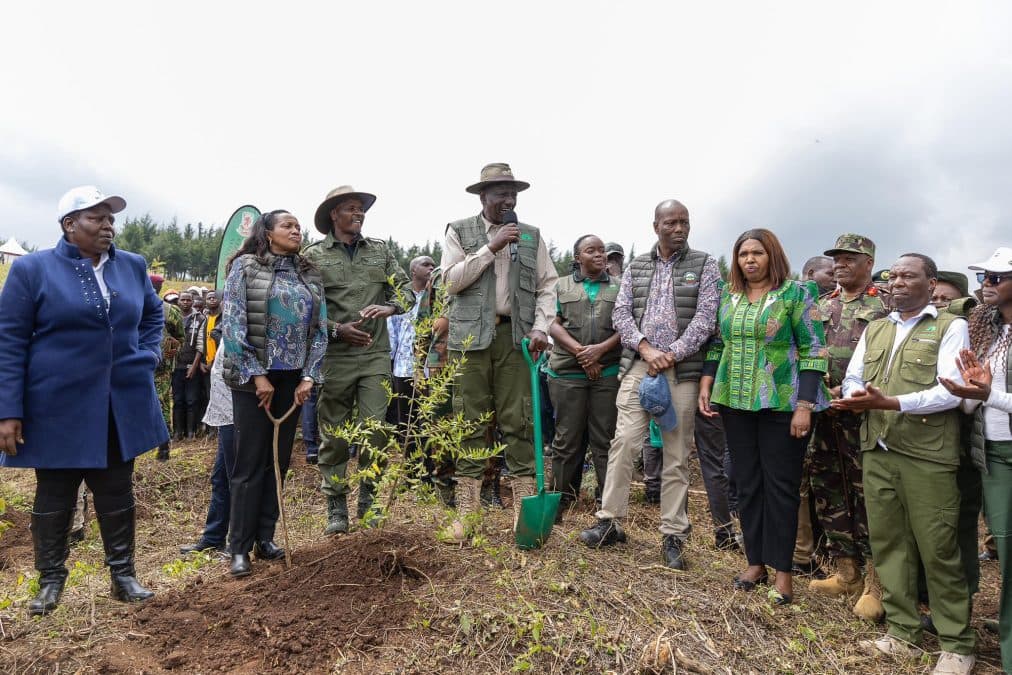We're loading the full news article for you. This includes the article content, images, author information, and related articles.
President Ruto's directive to end the six-year logging moratorium in Kenya's largest water tower has ignited fierce opposition from environmentalists, who warn of catastrophic ecological and economic consequences for Kenya and the region.

NAIROBI – Leading environmental organizations, the Green Belt Movement and Greenpeace Africa, issued a joint statement on Thursday, October 30, 2025, demanding the immediate reinstatement of the logging ban in the Mau Forest Complex. The call comes after President William Ruto announced the lifting of the six-year moratorium on Monday, October 27, a decision the groups warn will reverse decades of conservation progress and jeopardize the livelihoods of millions of Kenyans.
President Ruto, speaking in Elburgon, Nakuru County, framed the decision as an economic stimulus, intended to create jobs and support local industry by harvesting mature trees for furniture production. "We shall reopen your timber factory here... We will use our own timber to make furniture," President Ruto stated, adding that he had directed the Trade Cabinet Secretary to ban furniture imports from countries like China to bolster local manufacturing. The government plans to begin selling mature trees from forests across the country to local sawmillers.
The Mau Forest Complex is not merely a collection of trees; it is the largest of Kenya's five critical "water towers" and the most extensive closed-canopy forest in East Africa, covering approximately 400,000 hectares. It serves as the catchment for 12 major rivers, including the Mara, which is vital for the Maasai Mara National Reserve and the Serengeti ecosystem, and feeds major lakes such as Victoria, Nakuru, and Turkana. Consequently, the forest underpins key sectors of Kenya's economy, including agriculture, tourism, and energy, contributing to goods and services valued at over KES 20 billion annually, according to a Kenya Wildlife Service report.
In their joint statement, the Green Belt Movement and Greenpeace Africa highlighted that deforestation and forest degradation already cost the Kenyan economy an estimated KES 534 billion annually in lost ecosystem services. A 2012 report by the UN Environment Programme (UNEP) and the Kenya Forest Service (KFS) found that deforestation deprived the economy of US$68 million in 2010 alone, a figure that significantly exceeded the revenue from forestry and logging. The environmental groups argue that reopening the Mau to logging threatens to exacerbate these losses, leading to increased soil erosion, irregular rainfall, and diminished water quality.
The directive has been criticized as a stark contradiction of the government's own environmental commitments. Critics, including the United Green Movement (UGM) party, led by former Chief Justice David Maraga, pointed out the irony of the President championing a 15-billion tree planting campaign while simultaneously sanctioning the felling of mature forests. "You cannot plant trees with one hand and cut them with the other," noted one commentary. The move is seen as undermining Kenya's Nationally Determined Contributions (NDCs) under the Paris Agreement, which commit the country to reducing greenhouse gas emissions by 32% by 2030, a target heavily reliant on forests as carbon sinks.
The history of the Mau is fraught with challenges, including illegal settlements, political patronage, and extensive degradation. Between the early 1990s and 2009, the forest lost over 107,000 hectares—about a quarter of its cover. The logging ban, imposed in 2018, was a response to public outcry over diminishing water levels in key rivers. While the government has made efforts to reclaim and reforest degraded areas, conservationists fear the new directive, if not managed with extreme rigor and transparency, could open the door to a resurgence of the destructive practices of the past.
While President Ruto has assured that only mature and over-mature trees in designated plantations will be harvested under a structured plan, environmental watchdogs remain skeptical. They cite a 2023 Environment and Land Court ruling that stipulated any lifting of the ban must be preceded by a clear implementation framework, genuine public participation, and the formation of a Multi-Agency Oversight Team. The Green Belt Movement and Greenpeace Africa state there is no evidence these conditions have been met.
The organizations are demanding the government publish its felling plans for public scrutiny and ensure civil society and community representation on any oversight body to prevent corruption and overexploitation. They advocate for investment in commercial plantations on private land to meet timber demand, thereby relieving pressure on critical public forests like the Mau. As the debate intensifies, the future of Kenya's most vital ecosystem hangs in the balance, caught between promises of economic growth and the imperative of environmental preservation.
Keep the conversation in one place—threads here stay linked to the story and in the forums.
Other hot threads
E-sports and Gaming Community in Kenya
Active 7 months ago
Popular Recreational Activities Across Counties
Active 7 months ago
The Role of Technology in Modern Agriculture (AgriTech)
Active 7 months ago
Investing in Youth Sports Development Programs
Active 7 months ago